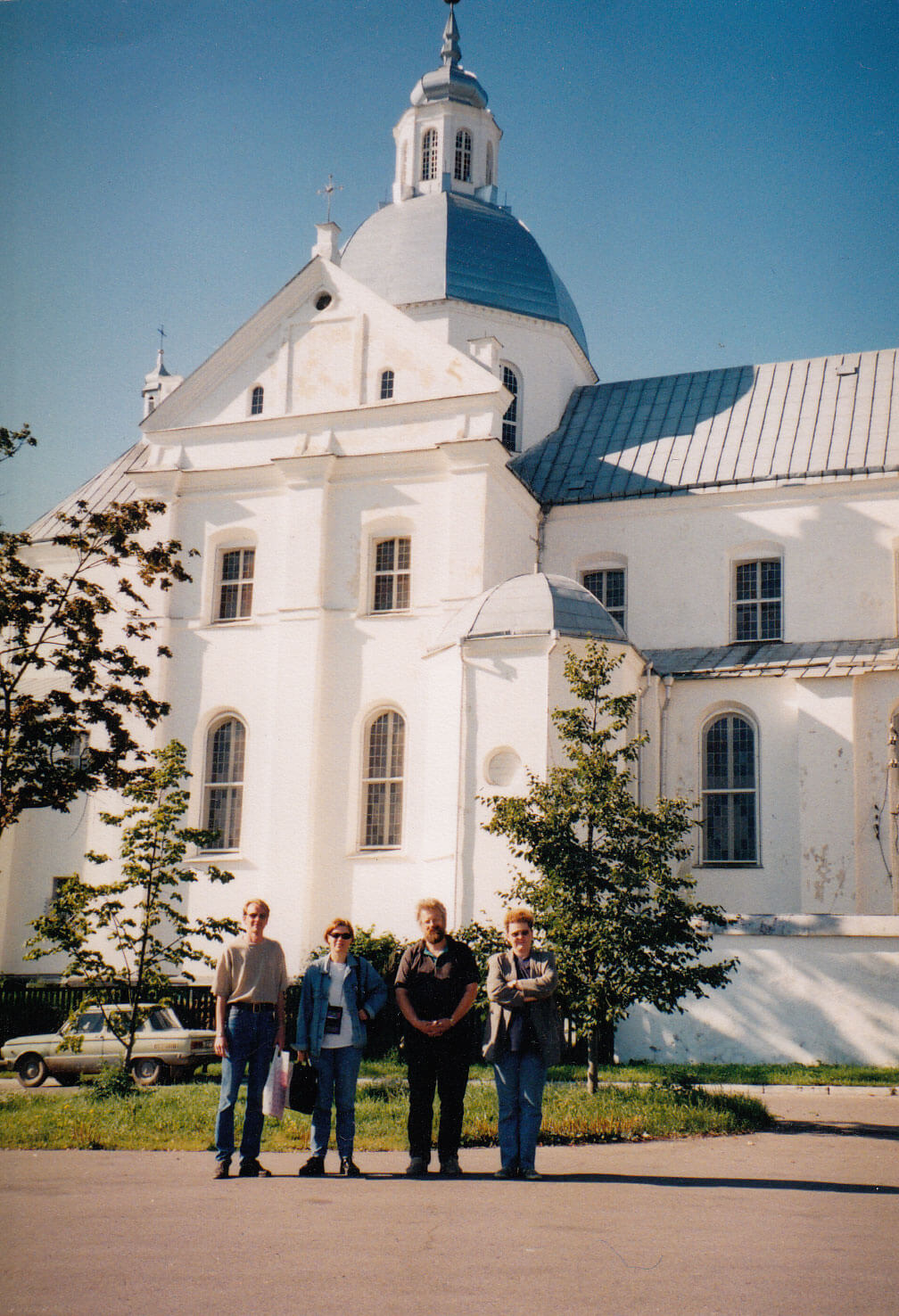In 1999, an inventory of the crypt (See more: Inventory. 1999) of the Corpus Christi Church in Nesvizh was made on the initiative of the Department of Cultural Heritage Protection (Lithuania; currently the Department of Cultural Heritage under the Ministry of Culture).1[Gintaras Kazlauskas, et al.], Kunigaikščių Radvilų mauzoliejaus inventorizacija: [the manuscript; preserved at the Department of Cultural Heritage under the Ministry of Culture (Lithuania)], 1999. For more see Аудроне Вишняускене, „Мавзолей Радзивиллов в костеле Божьего Тела в Несвиже“, in: Прыватнаўласніцкія гарады Вялікага Княства Літоўскага: лёс праз стагоддзі, Мінск: А. М. Янушкевіч, 2014, p. 8-22. The approval of the Ministry of Culture of the Republic of Belarus was obtained for doing that.
The works were carried out by Gintaras Kazlauskas, Diana Varnaitė, Audronė Vyšniauskienė and Sigitas Zabiela in the presence of Sergei Chistiakov, a representative of the museum-reserve of Nesvizh. All the sarcophagi were listed: they were measured, described (characterising the material, ornamentation etc.), their pictures were taken and the scheme of their layout in the crypt was drawn up; however, their contents (i.e. the remains and the burial items) were not studied. On the basis of the inscriptions made on the “cases” (wooden epitaphial plates that appeared in 1905), as well as the epitaphial plates on the sarcophagi and the ones on the walls, attempts were made to identify the burials. Taking into account the fact that the layout of the sarcophagi and the wooden plates dated back to 1905 were moved from their original locations at different times, the identification was not considered reliable. In making the inventory, other items belonging to the crypt, including entrances to the crypt, memorial plaques, painted cartouches, metal torch holders and others, were described. Only the texts on the epitaphial plates, which were fastened to the walls, were not copied.
In 1999, as many as 72 sarcophagi (including two bowls containing internal organs, which were removed at the time of embalming, as well as one ritual coffin) were found in the crypt. It is alleged that earlier there were more of them; for example, one source mentions as many as 102 sarcophagi2Bolesław Taurogiński, Z dziejów Nieświeża, Warszawa: Archiwum Ordynacji Nieświeskiej, 1937, p. 226.. This is very likely because the sarcophagi and coffins could have been destroyed during plundering and floods. The findings of anthropological research carried out in the crypt in 2016 can also partially confirm this fact as the remains belonging to some different individuals were found in one sarcophagus.
In 2016, one more inventory of the crypt was made. It was initiated by Mikołaj and Maciej Radziwiłł3[Mikołaj Radziwiłł, Maciej Radziwiłł], Krypta X. X. Radziwiłłów. Kościół Bożego Ciała Nieśwież, [s. l.], 2016.. Its aim was to make the data of the inventory made in 1999 more accurate or to provide an alternative to it: their own numbering of the sarcophagi and coffins was used and brief biographies of the individuals buried there were presented.
Audronė Vyšniauskienė
Inventory. 1999
| 1. | ↑ | [Gintaras Kazlauskas, et al.], Kunigaikščių Radvilų mauzoliejaus inventorizacija: [the manuscript; preserved at the Department of Cultural Heritage under the Ministry of Culture (Lithuania)], 1999. For more see Аудроне Вишняускене, „Мавзолей Радзивиллов в костеле Божьего Тела в Несвиже“, in: Прыватнаўласніцкія гарады Вялікага Княства Літоўскага: лёс праз стагоддзі, Мінск: А. М. Янушкевіч, 2014, p. 8-22. |
| 2. | ↑ | Bolesław Taurogiński, Z dziejów Nieświeża, Warszawa: Archiwum Ordynacji Nieświeskiej, 1937, p. 226. |
| 3. | ↑ | [Mikołaj Radziwiłł, Maciej Radziwiłł], Krypta X. X. Radziwiłłów. Kościół Bożego Ciała Nieśwież, [s. l.], 2016. |
Sources of Illustrations:
| 1. | Photograph by Sigitas Zabiela, 1999 // in: Kultūros paveldo departamentas prie Lietuvos Respublikos kultūros ministerijos (Department of Cultural Heritage under the Ministry of Culture of the Republic of Lithuania). |
